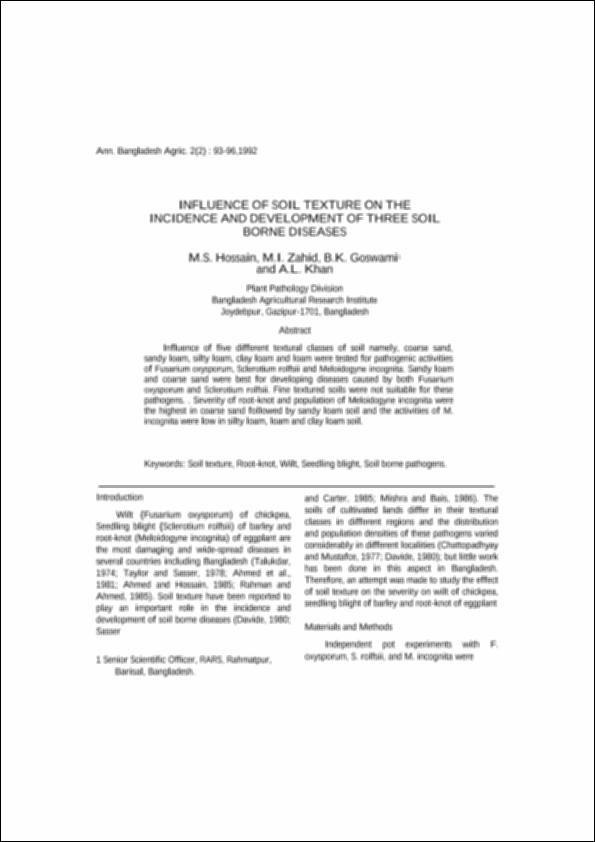INFLUENCE OF SOIL TEXTURE ON THE INCIDENCE AND DEVELOPMENT OF THREE SOIL BORNE DISEASES
| dc.contributor.author | Hossain, M.S. | |
| dc.contributor.author | Zahid, M.I. | |
| dc.contributor.author | Goswami, B.K. | |
| dc.contributor.author | Khan, A.L. | |
| dc.date.accessioned | 2021-01-17T09:50:45Z | |
| dc.date.available | 2021-01-17T09:50:45Z | |
| dc.date.issued | 1992-12 | |
| dc.identifier.uri | http://publications.bsmrau.edu.bd/handle/123456789/739 | |
| dc.description.abstract | Influence of five different textural classes of soil namely, coarse sand, sandy loam, silty loam, clay loam and loam were tested for pathogenic activities of Fusarium oxysporum, Sclerotium rolfsii and Meloidogyne incognita. Sandy loam and coarse sand were best for developing diseases caused by both Fusarium oxysporum and Sclerotium rolfsii. Fine textured soils were not suitable for these pathogens. . Severity of root-knot and population of Meloidogyne incognita were the highest in coarse sand followed by sandy loam soil and the activities of M. incognita were low in silty loam, loam and clay loam soil. | en_US |
| dc.description.sponsorship | BSMRAU | en_US |
| dc.language.iso | en | en_US |
| dc.publisher | BSMRAU | en_US |
| dc.relation.ispartofseries | V0l-2;No-2 | |
| dc.subject | Soil texture | en_US |
| dc.subject | Root-knot | en_US |
| dc.subject | Wilt | en_US |
| dc.subject | Seedling blight | en_US |
| dc.subject | Soil borne pathogens | en_US |
| dc.title | INFLUENCE OF SOIL TEXTURE ON THE INCIDENCE AND DEVELOPMENT OF THREE SOIL BORNE DISEASES | en_US |
| dc.type | Article | en_US |
Files in this item
This item appears in the following Collection(s)
-
Vol-2, No-2.1992 [10]

